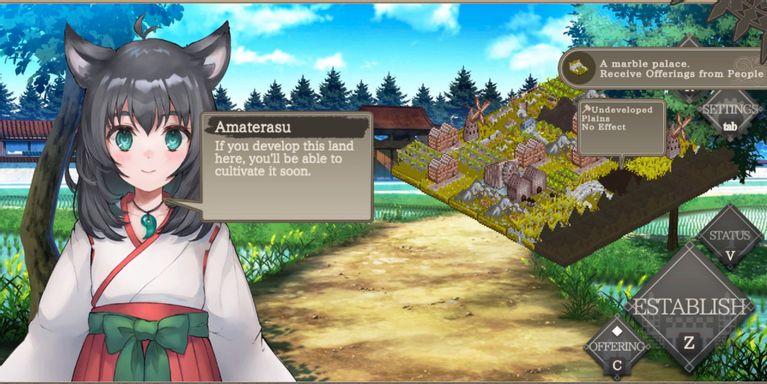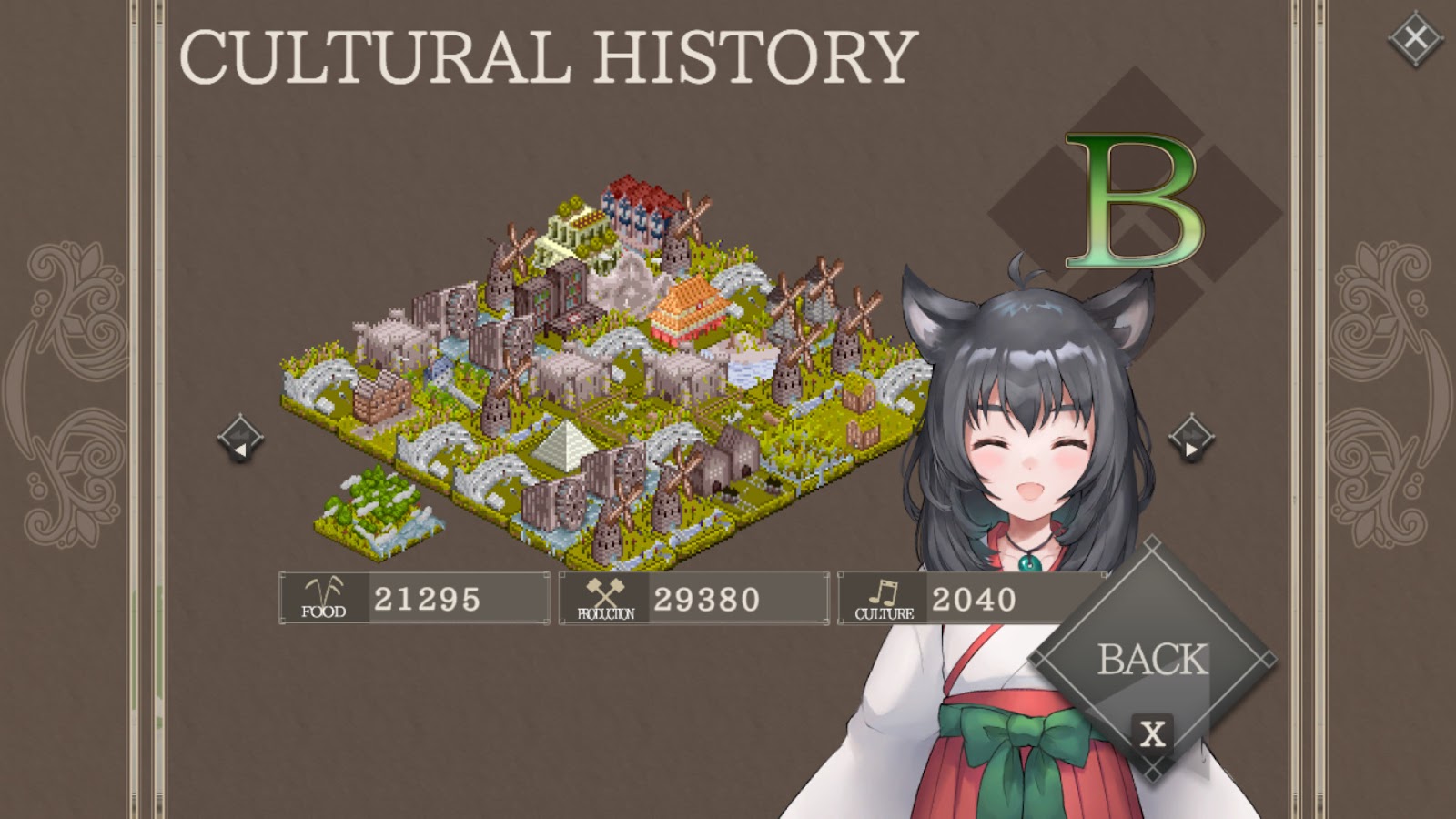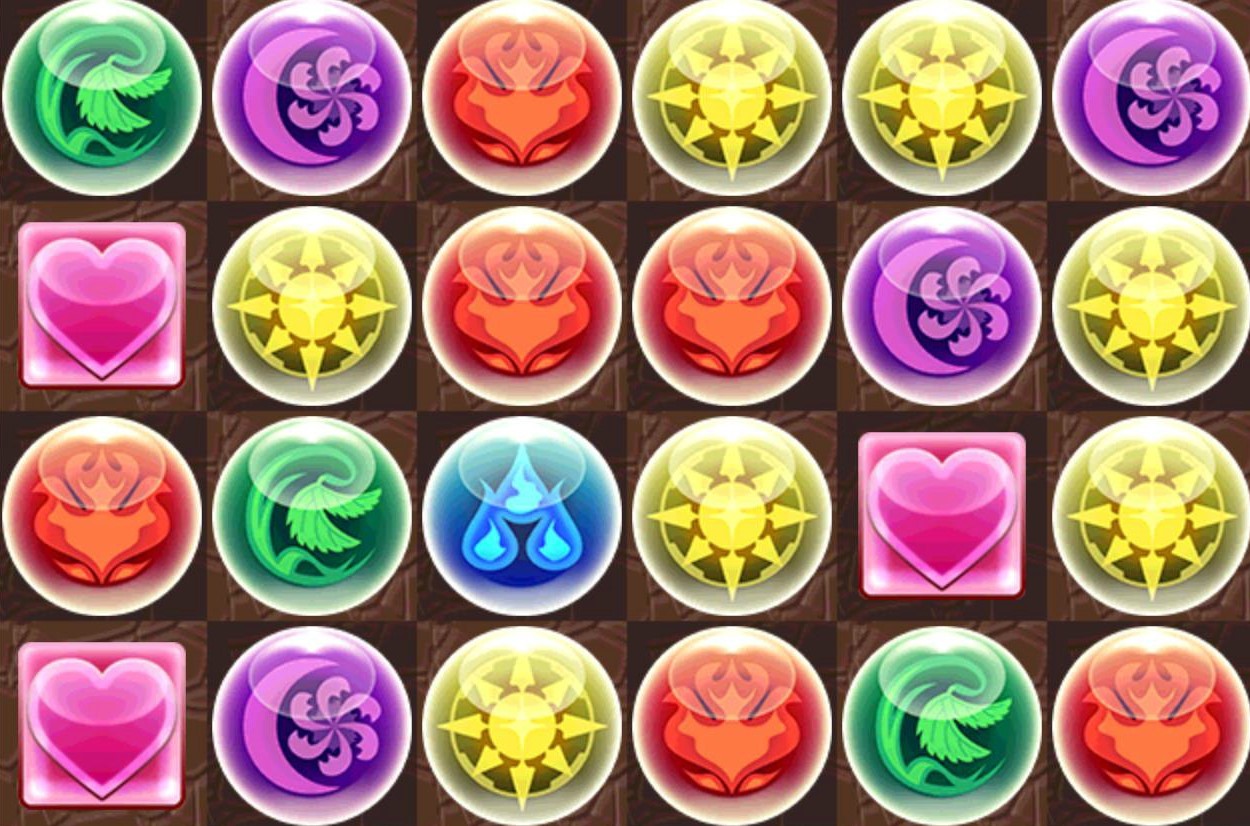If you like empire-building games like Civilization, or city builders like Cities: Skylines, but you don’t have the hundreds of hours of spare time lying around, then firstly, hello fellow millennial! I hope you’re getting as utterly tired of the endless hustle that modern life demands as I am. Secondly, I’ve found a treat for you! It’s called The Hundred Year Kingdom.
This humble little non-violent empire builder is the work of a solo indie developer out of Japan, and while it is very rough in places (the localisers completely forgot to translate the Japanese here and there, and the art is on the ugly side of primitive), the core gameplay loop that this thing offers is nuanced and strategic, and it’s only asking for around half an hour of your time per play session. That’s the equivalent of around four turns in Civilization.
When you start a new game you’re given 100 turns (each turn representing one year), and your goal is to make the best of that time to establish a flourishing kingdom. You can take one action per turn, and each action involves building something on a small grid of spaces. At first you’ll only have one square on the grid, and the stuff you’ll be building is simple; turning a featureless plain into a plot of farm land, or throwing down a mine to increase your nation’s building resources. Those simple, “level 1” developments don’t provide much, though, so on subsequent turns you can build more advanced structures over the top – vineyards, orchards, factories and so on – which provide escalating resources in turn. Or, instead, you can use the turn to unlock another square on the grid (assuming you have the resources) and then start to build it up too.

Eventually, you’ll start building great wonders, and those buildings will offer massive boosts to the quantity of resources generated by particular types of facilities. One great wonder boosts the production of vineyards. Another boosts the benefit gained from castles. At the end game, when you’ve purchased up all the land and are deep into developing all of it, success rests on combining these great wonders with a large number of specific buildings, and to do this really well, you basically have to be thinking about the end game from the very first turn.
There are three resources to manage – food, production, and culture, and different buildings will generate different amounts of each. There is no lose state in The Hundred Year Kingdom; you need resources to buy land and upgrade buildings, but there’s no way to go backwards. If you get really stuck, you can just cycle through a turn or two to build up enough resources to make an expensive next purchase.
Rather than aiming for some kind of competitive victory, in The Hundred Year Kingdom, you’re chasing scores. If your strategy clicks into place, and you make all the right decisions about what to build, where on the map to build it, and the order that you build them, then the resources will stream in and at the end of the 100 years you’ll be told that you’ve created an empire that will flourish into perpetuity. Don’t do so well and your people will be scrapping out a meagre existence instead. The lesson I took from this is that the world’s problems can be solved by putting in more vineyards. I think that’s a fair assessment of the state of the world, in hindsight.

Jokes aside, The Hundred Year Kingdom is, really, a pretty straightforward puzzle game that challenges your ability to plan several moves ahead, manage resources, and build things in the right order. It’s more than challenging enough in that those really good scores require some advanced mastery of the systems and intricacies of the game, and there’s a range of different landscapes to play on, which each have their own unique quirks and challenges. Finally, there are a number of different “goddesses” that you can choose between at the start of a game, which provide various minor bonuses, and they do level up from one game to the next, so there’s some progression in there that helps you get progressively better scores (without feeling like the whole thing’s a pointless grind). They don’t add that much to the overall experience, but they’re fun, and the art design of them is pleasant enough that it makes up for the hyper-pixelated nature of the buildings and facilities that you’re laying down.
The Hundred Year Kingdom is the most rare and precious of things: it’s a smart, engaging, and thoughtful game, but also one that is highly accessible, playable, and respects the player’s time. It is clearly a solo project, but it’s also weird how a solo developer has managed to figure out how to do that when so many developers 1,000x their size remain committed to wasting our lives on their content.









